
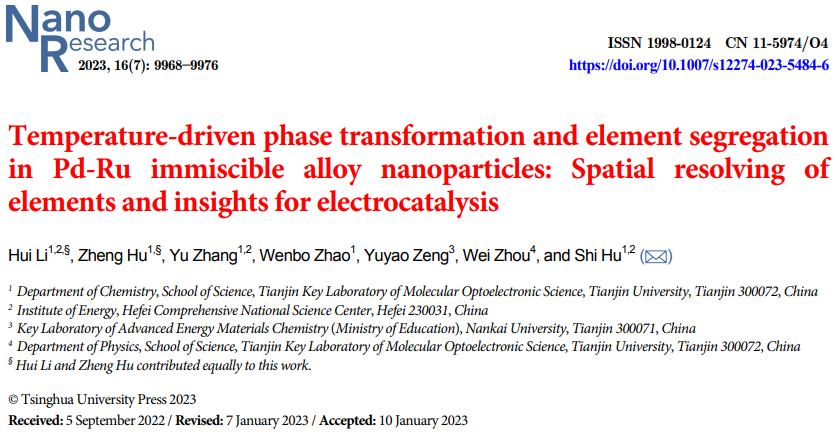
Phase Diagrams and Synthesis Methods: While phase diagrams can guide the thermodynamic preferences of alloys, synthesis methods determine their real structures. Bimetallic alloys may be kinetically trapped in various intermediate structures between solid solutions, heterogeneous structures, and intermetallic compounds.
Properties of Immiscible Alloys: Immiscible elements can still form solid-solution-like alloys when the phase grains are sufficiently small, endowing the alloys with unexpected catalytic properties.
02 Research Objectives
Phase Evolution and Element Segregation: Investigate the phase evolution and element segregation of immiscible Pd-Ru alloy nanoparticles before and after heat treatment.
Development of Analytical Methods: Develop a local element segregation (LES) analysis method to quantify the mixing of Pd and Ru atoms during the gradual transition from face-centered cubic (fcc) to hexagonal close-packed (hcp) phase.
03 Experimental Materials and Methods
Material Synthesis: PdRu4 alloy nanoparticles were synthesized using polyol method and subjected to annealing treatment at different temperatures.
Material Characterization: Samples were investigated using electron microscopy and energy dispersive spectroscopy (EDS).
Electrochemical Measurements: Conduct electrochemical measurements to evaluate the electrocatalytic performance of the samples.
LES Analysis: Develop a local element segregation analysis method based on EDS mapping signals and define a segregation index to describe the degree of short-range element segregation.
04 Experimental Results
Structural Changes: PdRu4 alloy nanoparticles mainly consist of fcc structure, containing a small amount of hcp structure of Ru. Phase transition from fcc to hcp occurs with increasing annealing temperature.
Element Segregation: Through LES analysis, it was found that Pd and Ru tend to separate during the annealing process, but the degree of element segregation decreases in the hcp structure obtained at 500°C.
Grain Size Changes: The grain size of the alloy nanoparticles increases after annealing, reflecting the short-range element segregation.

05 Theoretical Calculations
Density Functional Theory (DFT) Calculations: DFT energies of different configurations of PdRu4 models were calculated, revealing that hcp is more stable than fcc, explaining the phase transition during the annealing process.
Relationship Between Segregation Index and DFT Energy: For the two structures, DFT energy decreases with increasing segregation index, consistent with the immiscibility characteristics of the Pd-Ru system.
06 Illustrated Guide
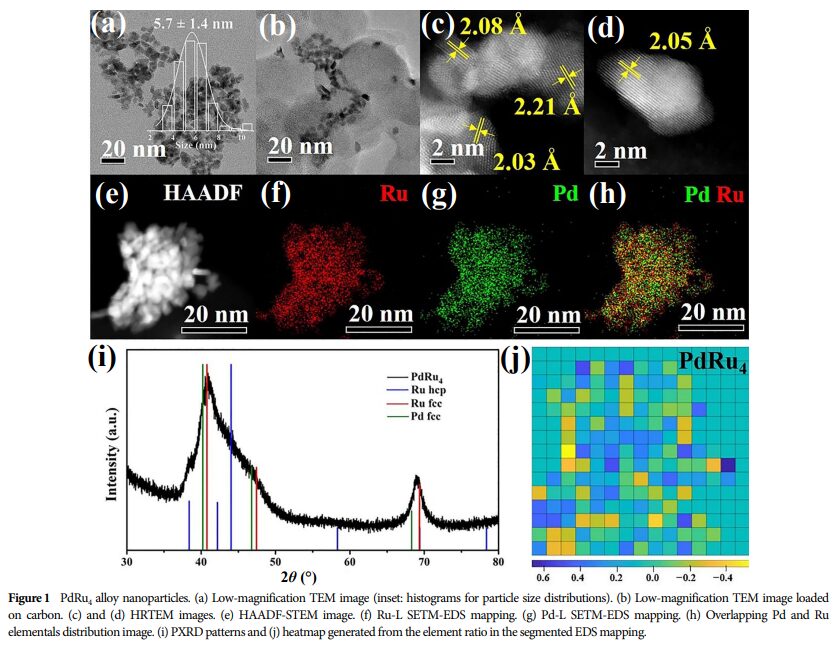
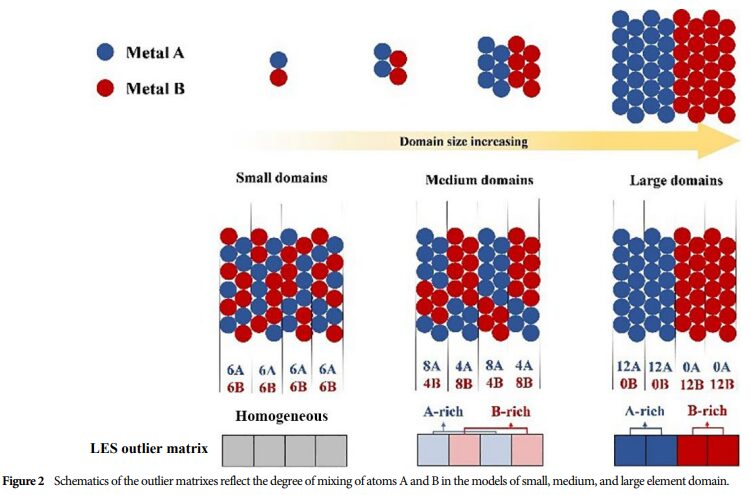
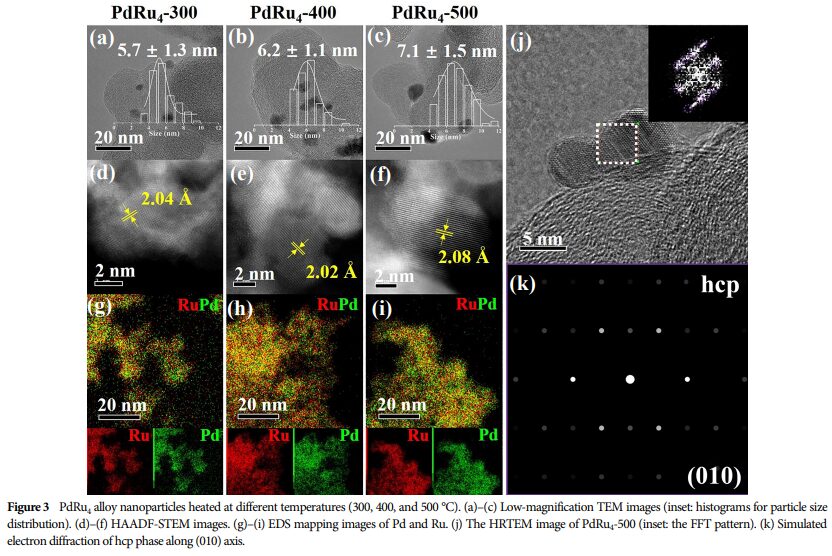
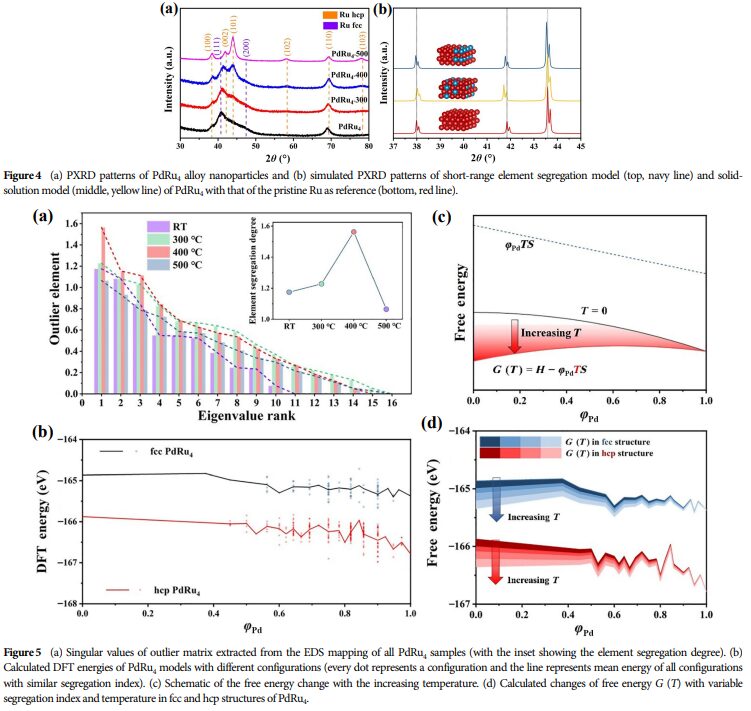
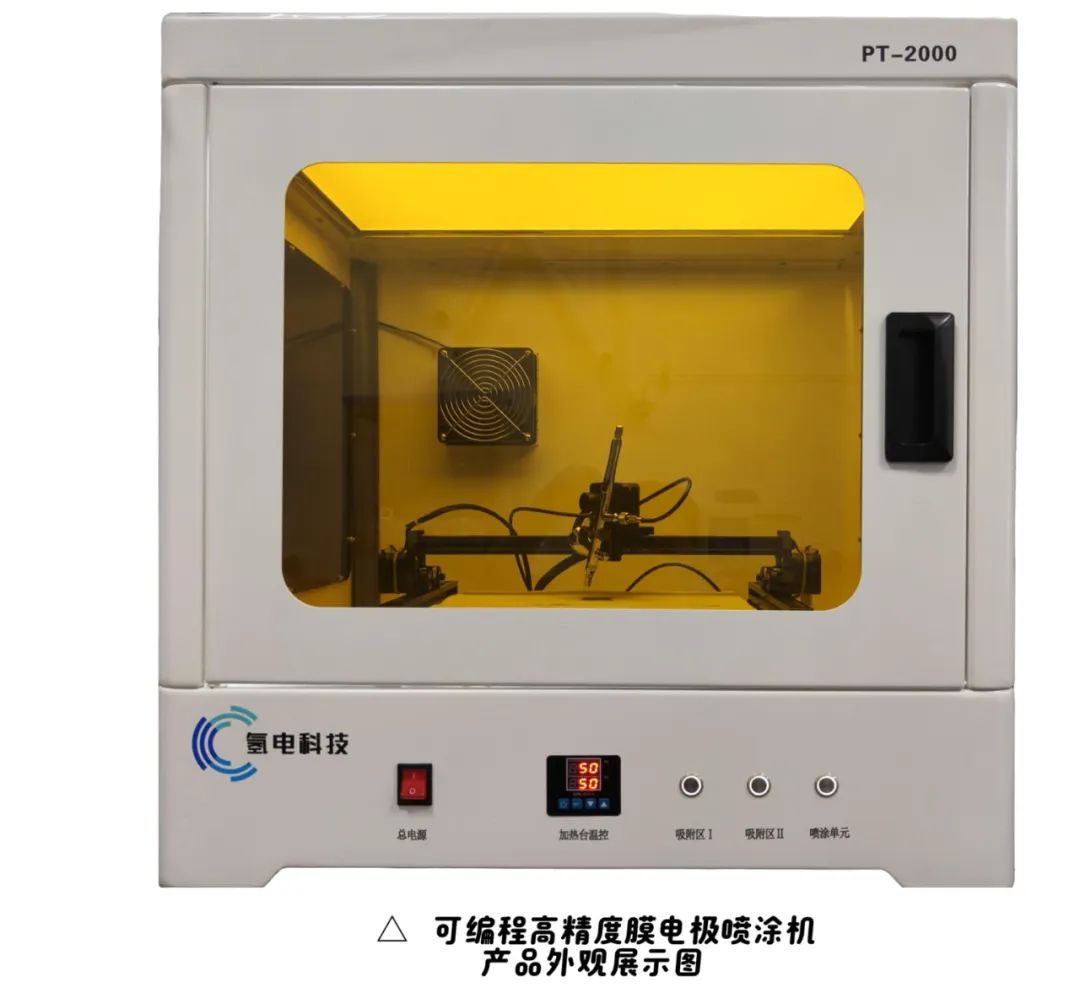

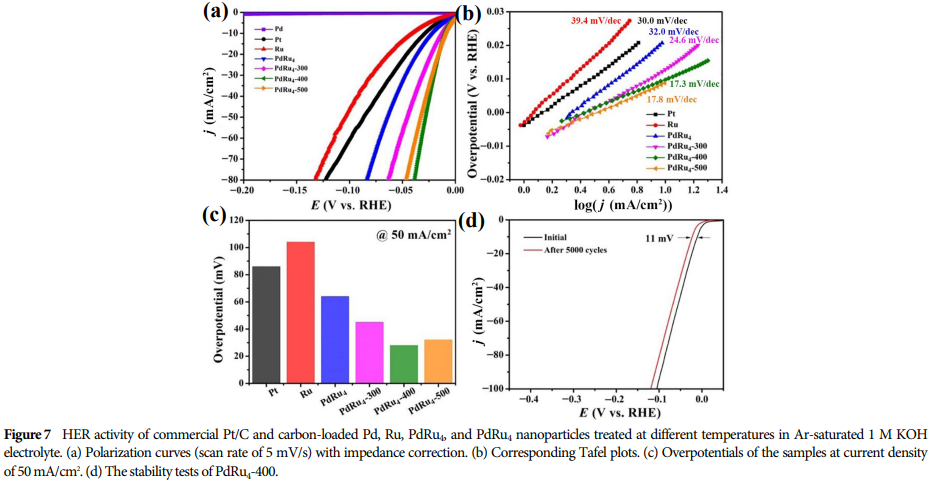
07 Conclusion
Mechanisms of Phase Transition and Element Segregation: Immiscible Pd-Ru alloy nanoparticles undergo a phase transition from fcc to hcp during annealing, accompanied by element segregation.
Application of LES Analysis: The LES analysis introduces the concept of the degree of element segregation and utilizes EDS intensity information, providing new insights into the phase transition and element segregation of alloy nanoparticles.
Prospects for Electrocatalytic Applications: The research results are significant for optimizing the electrocatalytic performance of immiscible alloy nanoparticles.
The article systematically explores the phase transition and element segregation mechanisms of Pd-Ru immiscible alloy nanoparticles through experimental and theoretical calculations, providing important insights for understanding their electrocatalytic performance and offering a theoretical basis for further optimizing the performance of alloy nanoparticles.